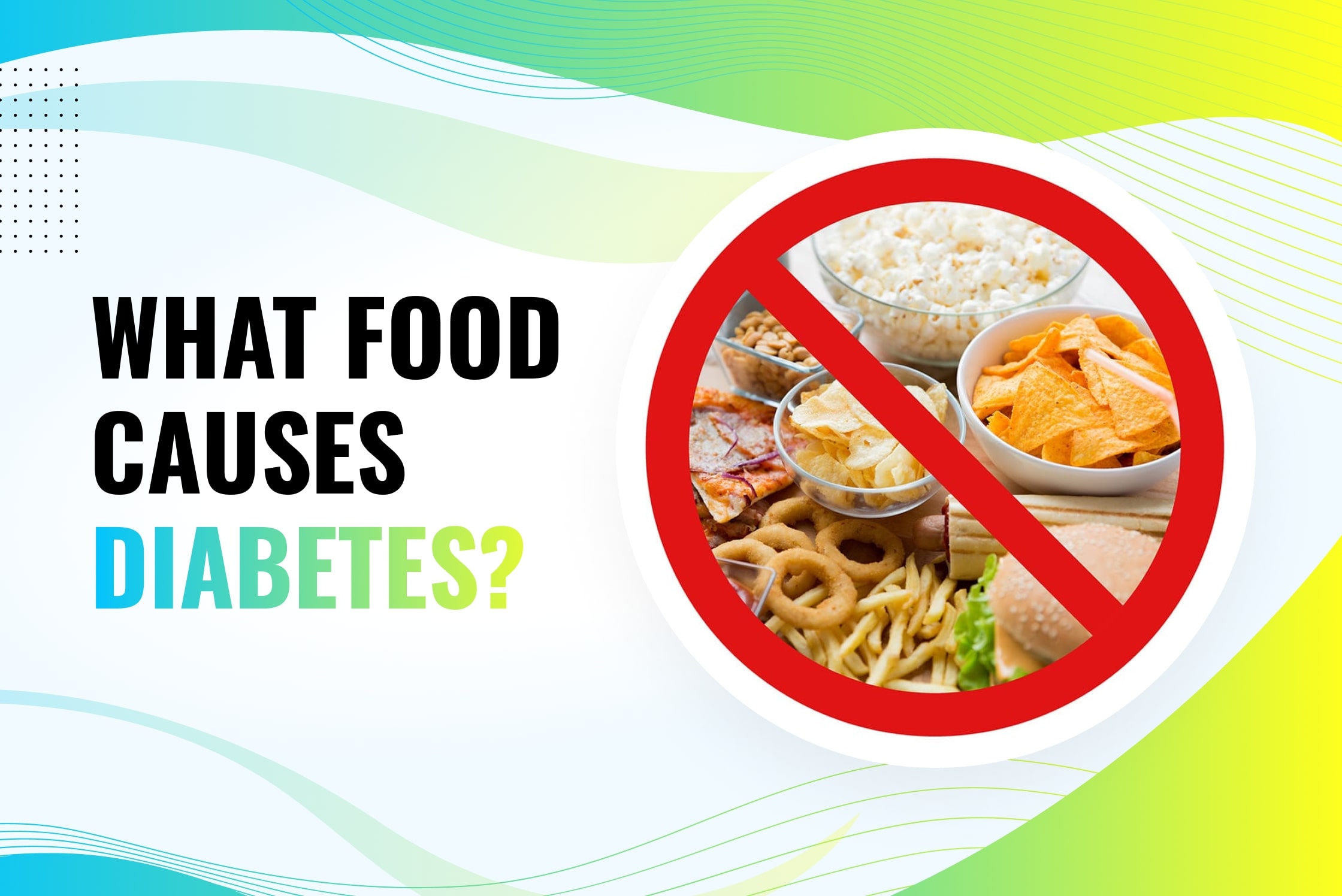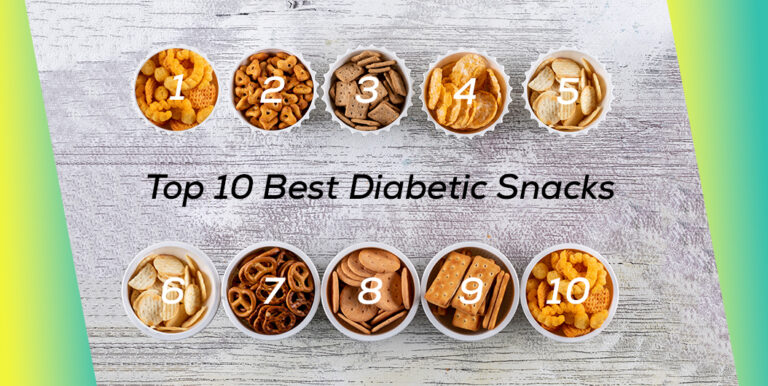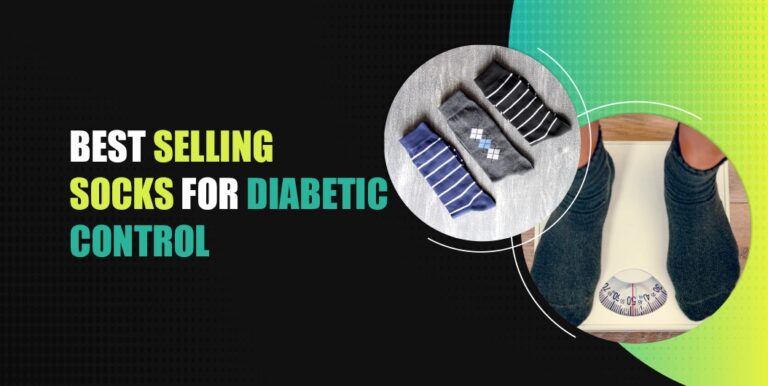What Food Causes Diabetes? (Complete Guide)
Are you worried about developing diabetes?
Eating the wrong food can increase your risk for diabetes, so it’s essential to know which foods to avoid.
Food with too much sugar, white flour, and refined carbs can increase your risk of developing diabetes. It’s important to avoid these foods or find healthier alternatives. But in general, too much of anything isn’t good for your health.
In this complete guide, we’ll share with you which foods cause diabetes and how you can make healthy meal plans. Keep reading to learn more!
What is Diabetes and What Are its Causes?
Diabetes occurs when too much sugar (glucose) is in the blood. It can be caused by a lack of insulin production or an inability of the body to use insulin properly.
People who are overweight, inactive, have a family history of diabetes, or are over 40 may have an increased risk of developing type 2 diabetes.
Additionally, certain medical conditions, such as high cholesterol and elevated blood pressure, can increase your chances of developing the disease.
Eating unhealthy foods that contain too much sugar and fat can also contribute to diabetes.
What Foods Increase your Risk of Developing Diabetes?
When it comes to foods that increase your risk for diabetes, they all fall into specific categories.
Here, you’ll learn what types of foods to avoid as well as examples of them.
1. Refined carbohydrates – are foods that have transformed to strip away vital nutrients like vitamins, minerals, and fiber.
While they may be tasty additions to any meal, there’s no mistaking the fact these deceptively delicious choices lack nutritional substance compared with their unprocessed counterparts.
Examples of refined carbohydrates include:
- white bread
- white pasta
- white rice
- crackers
- chips
- pretzels
- doughnuts
- waffles
- pancakes
2. Processed meats – They may taste oh-so-delicious, but they come with a high cost to your health.
With high levels of saturated and trans fats and added sugar or flavorings that can contribute extra calories, these prepared items have been linked to an increased risk of developing diabetes.
Though shelf life is extended through preservatives, it’s not worth the potential long-term consequences!
Examples of processed red meat include:
- Hot dogs
- bacon
- sausage
- pepperoni
- salami
- and other deli meats
3. Trans fats – A lurid reality hides in processed and fried foods – dangerous trans fats. Through a process involving the addition of hydrogen to vegetable oils, these harmful compounds are formed to increase shelf life.
However, their consumption could put you at risk for serious health issues such as heart disease, stroke, and type 2 diabetes.
Examples of food that fall into the category of trans fats include:
- Margarine: Margarine is an artificially created butter substitute made with partially hydrogenated vegetable oils containing unhealthy trans fats.
- Fried foods: French fries, potato chips, deep-fried chicken, or fish all contain trans fats from the oil they were cooked in.
- Baked goods: Cakes, cookies, and other baked goods made with white flour may also contain unhealthy levels of trans fat.
- Fast food: Many fast food restaurants prepare their meals with partially hydrogenated oils containing trans fat as well. Hamburgers, pizza, and hot dogs are just some items you should look out for when dining out.
- Processed snacks: Many store-bought snacks, such as crackers, chips, or pretzels, are made with partially hydrogenated oils containing trans fatty acids.
4. Sugary drinks – Quenching thirst with sugary drinks may be tempting, but indulging in too much can send blood sugar levels soaring.
Some common examples of sugary drinks include:
- Soda – Whether Coke, Pepsi, or any other carbonated drink, soda is packed with sugary sweetness but lacks nutritional value. It might be tasty to sip on occasionally – but guzzle too much, and you’ll end up with an unhealthy dose of empty calories!
- Energy Drinks – have become a popular source of quick energy and stimulation. Available in almost any store, they can contain large amounts of sugar and stimulants like caffeine – too much intake may lead to a heightened risk for diabetes.
- Fruit Juices – Natural fruit juices can provide vitamins and minerals, but be wary – these beverages may contain more sugar than the average sugary soda. Opt for fresh-squeezed or homemade juice whenever possible to reduce sugar intake; canned and bottled options tend to have even higher concentrations of sweetness!
- Sports Drinks – have become a popular tool for athletes to stay hydrated and energized during intense workouts. However, with high levels of added sugars in these beverages, you must monitor how much you are consuming.
5. High-fat dairy products
Rich, creamy, and flavorful- high-fat dairy products can indulge any meal.
However, consuming too much of these foods can put you at risk for heart disease or stroke, as saturated fat elevates bad cholesterol levels in your body.
Furthermore, if consumed to excess, they could lead to weight gain, which increases the likelihood that an individual develops type 2 diabetes down the line.
Examples of high-fat dairy products include:
- Whole Milk – Whole milk contains 3.25% fat and 150 calories per cup.
- Cheese – Cheese is made by coagulating the proteins in milk and separating the fats from the solids. Popular types include cheddar, Swiss, mozzarella, and blue cheese, with most varieties having around 6-9 grams of fat per ounce.
- Cream – Cream is made by skimming the fat off the top of pasteurized whole or skimmed milk, and it has at least 18% butterfat content, with many types containing up to 36%.
- Yogurt – Yogurt is a cultured dairy product made from fermented milk, which can contain anywhere from 2-10g of fat per serving, depending on the variety consumed.
- Ice Cream – Ice cream typically contains 10-30g fat per 100g serving, making it one of the highest sources of saturated fats among all dairy products.
6. Refined sugars – From candy’s sweetness to cakes’ texture, refined sugars have become a staple in many processed foods and drinks.
Typically found as white sugar (or sucrose), brown sugar, confectioner’s sugar, icing, or high-fructose corn syrup – these types are used for more than just flavor but, unfortunately, don’t offer any other benefits nutritionally.
Examples of products that contain refined sugars include:
- candy such as gummy bears and jelly beans
- cookies such as chocolate chip or oatmeal
- cake mixes; pastries like croissants or donuts
- breakfast cereals with added sweeteners
- instant oatmeal
- flavored yogurt
- energy bars and drinks
- pre-packaged smoothies and juices
- canned fruits in syrup
- condiments like ketchup or barbecue sauce
- pancake mix
- other prepared breakfast food
7. Refined grains – such as white flour used to make cakes, cookies, and other baked goods
How To Create A Healthy Diet For Managing Diabetes
Eating a diabetic-friendly diet can benefit more than just controlling glucose levels – it also helps nourish your body.
An array of delicious, healthy foods that are low in added sugars and saturated fats (as well as a few refined grains) will help you better manage diabetes while satisfying cravings simultaneously!
First, eating fruits and vegetables is a great way to maintain healthy blood sugar levels while reaping the benefits of essential vitamins, minerals, fiber, and antioxidants. Aim for at least five daily servings to keep your diabetes in check without sacrificing taste.
Must read: What Vegetables Are Bad For Diabetes? (Complete List)
A diabetes meal plan should also include wholesome grains like oats, quinoa, and brown rice, which provide sustained energy due to their low glycemic index.
Rich in fiber, these staples help digestion slow down so that blood sugar levels can be stabilized over a longer period – avoiding sudden spikes, unlike refined grains.
Then, eating low-fat dairy products like skim milk, yogurt, and cheese can be a great way to ensure you’re getting vital nutrients in a diabetes diet.
Though calcium helps strengthen bones, watch out for high cholesterol – opt for unsweetened options whenever possible!
Lastly, incorporate healthy fats from nuts and seeds and fatty fish such as salmon or tuna.
These snacks help stave off hunger cravings, and their essential vitamins and minerals can also reduce the risk of other chronic diseases later in life.
Diabetic-Friendly Recipes
People with diabetes don’t have to sacrifice flavor to eat a healthy diet! There’s something delicious and diabetes-friendly for every meal.
Oatmeal with nut butter or an egg scramble makes perfect breakfasts in the morning.
Why not try out a quinoa bowl of black beans and grilled vegetables for lunch?
And dinner can be made special by preparing a stir fry of shrimp, snow peas, and mushrooms – yum!
Regarding snacks, enjoy hummus with celery sticks or Greek yogurt sweetened naturally with honey; there are so many options that no one has to miss out on tasty treats, even when trying to maintain sugar levels.
With ingenuity in the kitchen, you can keep your blood sugar happy without compromising your taste buds’ satisfaction!
Bottomline
When it comes to managing diabetes, a healthy diet is critical. Almost all types of food can cause diabetes if taken in large consumptions regularly.
On the contrary, there are healthy food combinations that are still delicious! So, whether you have diabetes or not, creating meal plans will help you as much as avoiding diabetic-causing foods.





